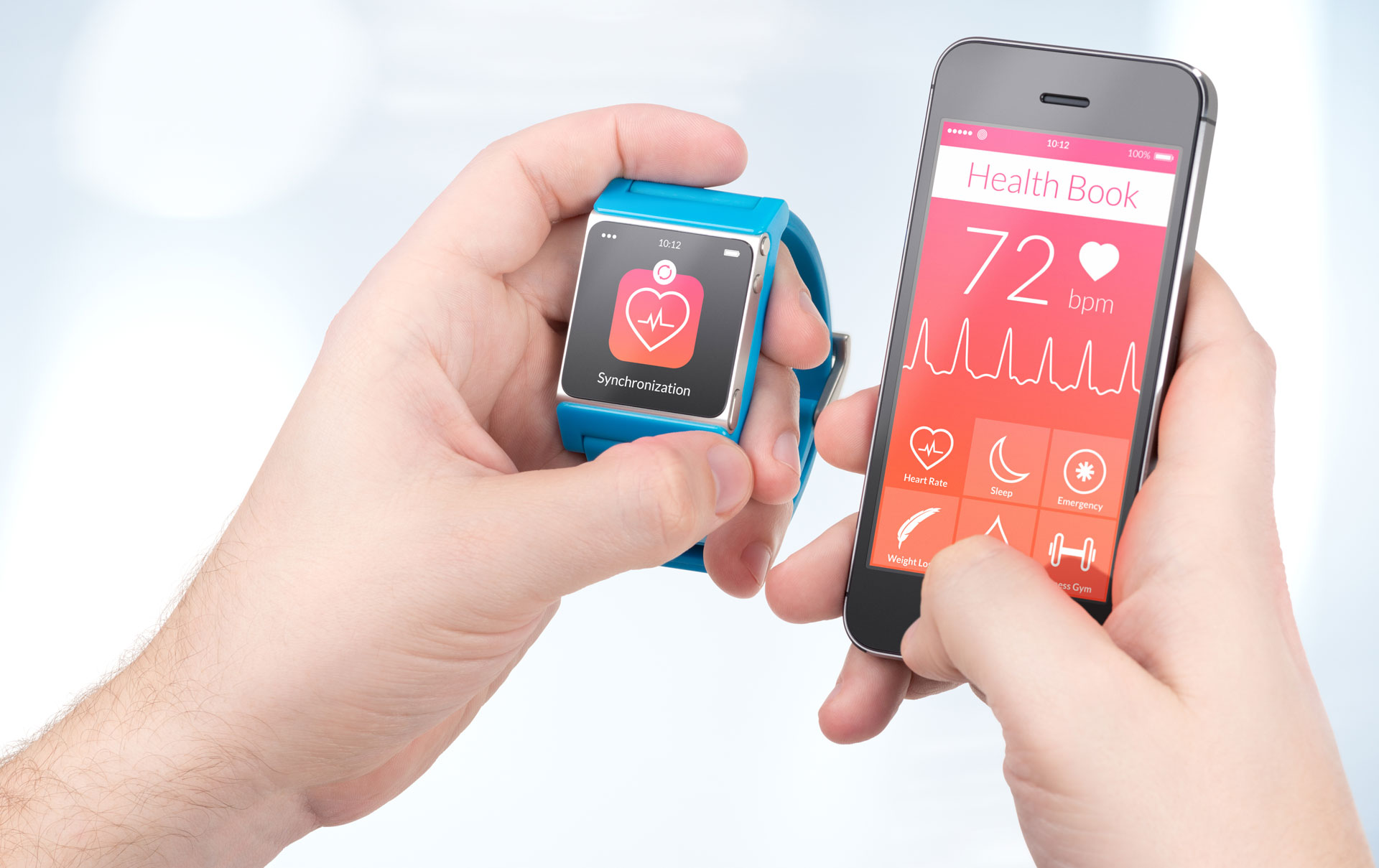We recently introduced our “game changers” series, looking at why the patient journey is such an integral part of healthcare brand strategy and planning. It’s our belief that achieving a rich, detailed, and insightful view of the patient journey should be the gold standard for healthcare marketers, and in our upcoming series of articles, we want to explore some of the new and innovative ways we can do this.
Over the course of the next few weeks we will look at the role of mobile, wearable, social and online technologies and how they affect the way we can research today’s patient experience. Today’s article will start with mobile technologies and applications.
Mobile economy
We’ve all seen and heard the numbers before – the mobile industry continues to scale rapidly, with a total of 3.6 billion unique mobile subscribers at the end of 2014. Half of the world’s population now has a mobile subscription—up from just one in five 10 years ago. An additional one billion subscribers are predicted by 2020, taking the global penetration rate to approximately 60%[1].
Like any other industry, both healthcare and research are adapting to this change and learning how “mobile” is impacting its established operating models, identifying both its challenges and opportunities.
For healthcare itself, the questions come in how “mobile” can be used as a tool to better care models for patients and potentially reduce the logistical and financial burden on healthcare payers and governments around the world. But, change doesn’t come easy in an industry traditionally reticent to change and while the scale of mobile health is impressive, questions still arise as to the extent it’s resulted in genuine behaviour change.
For research, the questions come in how “mobile” can improve what’s already available through traditional quantitative and qualitative techniques. Undoubtedly the scale and opportunity of bringing research to the mobile phones of millions, if not billions of respondents is exciting. However, innovation for the sake of innovation is likely to prove ineffective, costly and potentially (already) detrimental to long-term adoption at scale. The true value of mobile research will be reached by those who unlock its potential at the right time, in the right circumstance.
Today’s article will focus on the mobile research debate, and in particular how we feel mobile research applications can be most effective, most notably in patient research.
Mobile economy: market research
Mobile market research has been a buzz phrase in our industry for many years now. However, when “mobile” burst onto the research landscape many customised research applications lacked the utility and functionality of today’s offerings. As a consequence we saw mixed results in mobile research methodologies. Confounding the problem, was the perception that “mobile” was somehow a replacement or evolution away from well-established quantitative and qualitative methodologies.
So why therefore do we see “mobile” as having “game changing” qualities?
Well, like any product that comes to market, you are likely to see both growth and maturation following initial introduction. The product evolves and adapts to the needs of its customers. And, that is what we are seeing in mobile market research. The functionality and capabilities of mobile research applications have matured allowing for in-the-moment insight capture, wherever and whenever it’s convenient.
However, it’s not just the technology but the researchers’ themselves who have matured to the use and adoption of mobile research. At Decision Architects, we believe mobile research can be used to supplement traditional research techniques and provide additional depth through multi-media questioning built-in to the functionality of the application. In addition, learning “when” and “where” to use mobile research has been as important as making the actual research tools themselves better! Which brings us on to patient research.
Mobile research – a “game changer” in patient research!
Research is most effective when you ask the right person, the right question in the right way to answer a specific business problem or need.
Patients – the perfect “mobile” respondents?
The Decision Architects team have had experience of conducting mobile market research with a range of different physician types, patients and consumers. And, our experience has shown that patients prove time and time again to be most responsive to a mobile research approach. Both in terms of ability to recruit and engagement throughout the research project. Many mobile research methodologies have explored the idea of giving greater control of the research interaction to the respondent (i.e. to report “in-the-moment”) and patients have been most receptive to this approach. For many patients it gives them a platform to vent or share through a secure and confidential tool. This is particularly the case in patients with rare or hard to treat / manage conditions, where the burden of the disease is that much greater.
However, using mobile with the right respondent type alone is not enough. At Decision Architects we feel there are particular circumstances where mobile research can add depth and give potentially richer, more detailed insight to the patient experience.
Mobile diaries: the evolution of traditional “diary” exercises
At Decision Architects, we believe mobile methodologies has the potential to re-invent traditional diary research.
Understanding how patients feel, and what they experience day-to-day will always be of interest to healthcare marketers. Customised research applications can be designed to allow patients to input spoken-word, video, images or open-text in-the-moment. As researchers’ we must strive to bring ourselves closer to those key moments we seek to understand rather than ask it to be contextualised after the fact.
We believe giving an element of control of the research interaction to the respondents has the potential to unearth new, richer and more detailed insights. This approach will allow patients to share their thoughts and experiences as they happen.
Control of the research will still be gained through pre-set tasks at specific moments of interest for the marketer, for example:
- HCP Consultations
- While taking treatment(s)
- While recovering from treatment(s)
- While suffering from symptoms
Such “occasions” can become pre-set tasks in the mobile diary that are there for respondents to use as-and-when they go through it themselves.
The results will provide a longitudinal view of the patient experience, “in-the-moment”. Deliverables will be able to leverage the rich multi-media content the application is able to generate.
As a supplement to traditional patient research, we believe a mobile approach to diary research can act as a way of bringing the patient experience to life.
Understanding compliance: quantifying & qualifying non-compliance
The cost of non-compliance can be great on many levels. To patients it can mean a lack of efficacy and a continued strain from the disease on their day-to-day lives. For product providers it can have impacts on reputation, adoption and continuation of treatment.
However, quantifying and qualifying non-compliance can be challenging in the abstract setting of traditional quantitative and qualitative techniques.
For treatments and conditions where compliance can be a problem a mobile approach may offer a solution to provide depth, data and insight to non-compliance.
Customised mobile research applications have the capacity to be set-up as “compliance calendars”, to help quantify compliance day-by-day. Where non-compliance is a problem, there can be spoken-word, video or open-text response options set-up to allow the patient to qualify their own non-compliance, or even ask the physician to qualify the non-compliance of the patients they are treating.
The results will provide both quantified results to treatment compliance while also adding qualitative depth to explain it. In doing so, we can explore the variety of reasons for non-compliance and adopt strategies and patient support schemes to help with non-compliance for those reasons. Different segments of patients may exist who are non-compliant for a variety of personal, social and physical reasons all requiring tailored strategies to help overcome this.
As a supplement to traditional patient research, we believe a mobile approach to compliance will add more context and bring marketers and brand teams closer to the moment of non-compliance.
Mobile methodologies – a continuing evolution!
At Decision Architects we continue to challenge ourselves to provide clients with the latest in cutting edge research thinking. As these tools are used more at scale, more context or opportunity where they add the most value will be discovered. Our aim is to take advantage of the scale “mobile” offers, however not just as a way of offering innovation for the sake of innovation. We believe they are tools to be used alongside traditional research techniques, and to add depth, richness and new insight.
In the coming weeks we will continue our “Game Changers” series by looking at the value and opportunities of wearables as a tool for patient research.
[1] http://www.gsmamobileeconomy.com/GSMA_Global_Mobile_Economy_Report_2015.pdf










